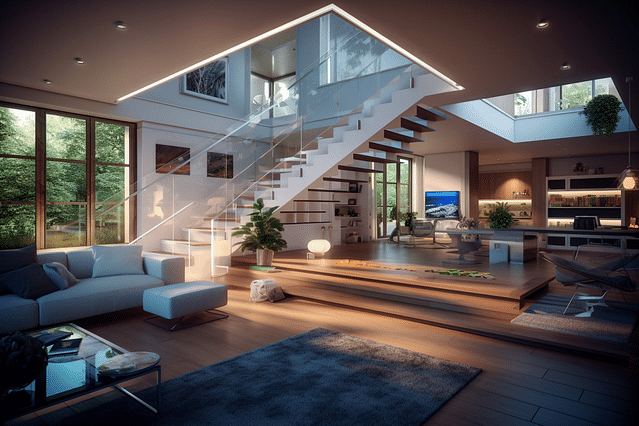
All You Need to Know About Household Automation
In this post, we are going to talk about household automation and how it can improve your life. Home automation has become increasingly popular in recent times as people look to simplify their lives and make day-to-day living more comfortable. In this post, we will look at what household automation is, its benefits, the different types of automation and how to get started.
What is Household Automation?
Household automation, also known as home automation, is the process of automating various tasks and devices within your home. With household automation, you can control various aspects of your home, including lighting, temperature, entertainment systems, security systems and so much more.
Household automation is all about integrating your home devices and connecting them to a central system that can be controlled through a smartphone or tablet. Through this automation, you can control various devices and systems in your household with just a few taps on your smart device.
The Benefits of Household Automation
There are many benefits of household automation, including:
Convenience
One of the main benefits of household automation is the convenience it provides. Through automation, you can control various devices and systems in your household with just a few taps on your smart device. For example, you can turn off the lights or lower the temperature in your home without having to get up and physically do it yourself.
Energy efficiency
By automating your home, you can save money on your energy bills by reducing energy consumption. For instance, you can set your home automation system to automatically switch off lights when no one is in the room or reduce your heating when the occupancy sensors detect that nobody is home.
Increased security and safety
Home automation can also improve the security and safety of your household. You can connect your security cameras, door locks and motion sensors to a central system and control them with your smart device. This allows you to check on your home's security while you're away and receive notifications when there are any security breaches.
Types of Household Automation
There are many different types of household automation, including:
Lighting
Smart lighting systems can be controlled by motion sensors, timers or by using voice commands. By automating your lighting, you can set the mood, save energy and improve security.
Temperature control
Thermostats can help you regulate indoor temperature, saving you money on energy bills.
Entertainment systems
Centralized entertainment systems such as home theater systems can be automated to allow you control over all your devices from one central location.
Security
Automated security systems can be synced with smartphones and other devices, providing real-time security updates.
Getting Started with Household Automation
Here are some tips on how to get started with household automation:
Choose the right products
There are many home automation products available on the market. Choose the ones that are suitable for your needs and budget.
Plan your automation project
Assess what you want to automate and create a plan on how to integrate the devices into one cohesive system.
Hire a professional
You may want to consider hiring a professional to help you with the installation and integration of your home automation system.
Customize your settings
After your installation, you can customize your settings to your preference.
Conclusion
Household automation has revolutionized the way we live. It makes our lives more comfortable, convenient and secure. Home automation is the way of the future. By following the tips we have outlined in this post, you can get started on a home automation project and improve your quality of life.
Posted on: Dec 3, 2022 Last updated at: May 4, 2023